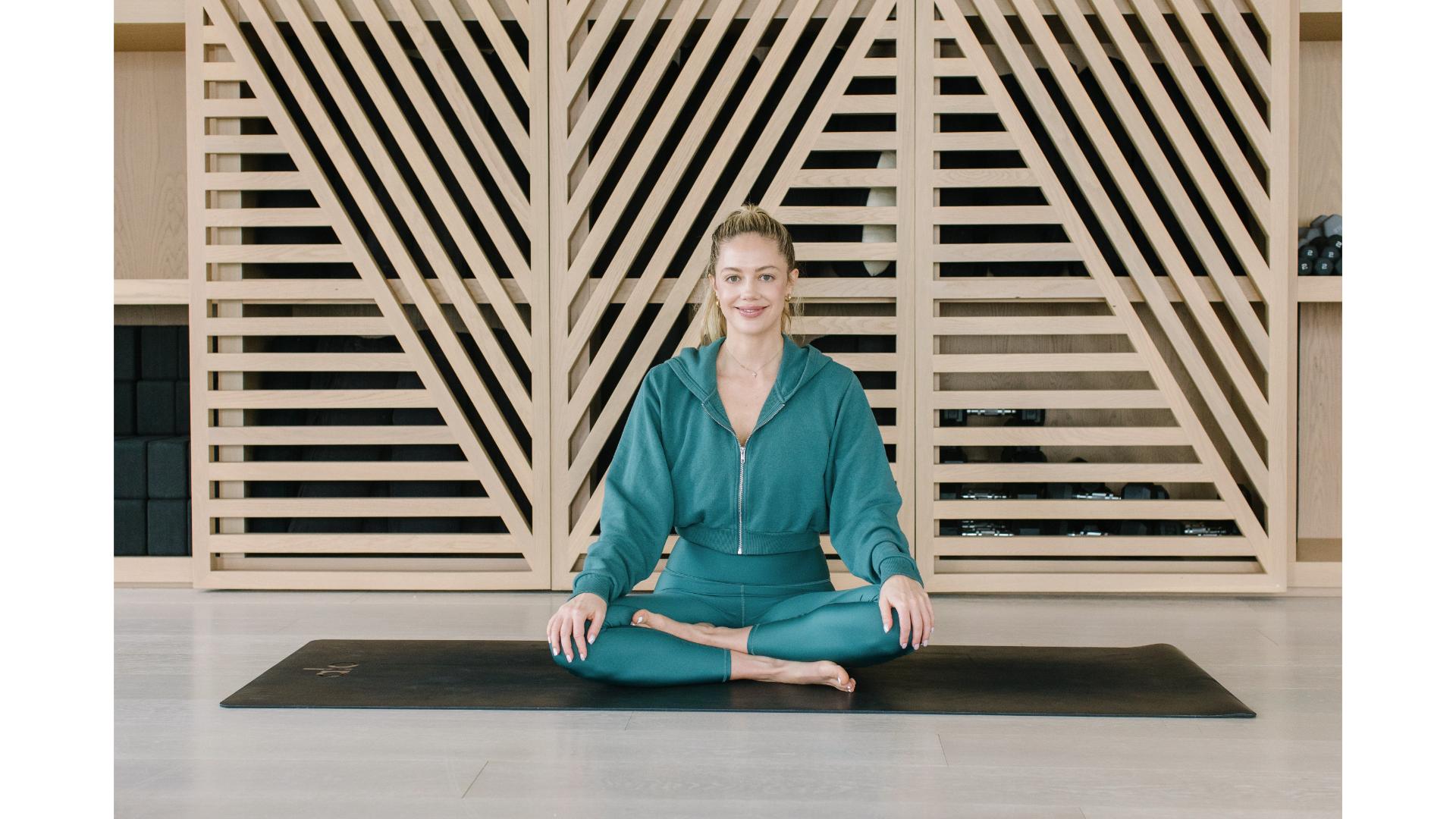
If your body feels tight, especially after a day at your desk, why not try this 10-minute stretching routine.
Yoga and Pilates instructor Britt Turpack is a firm believer in the phrase “movement is medicine”, saying we would all feel a little better if we stretched more consistently.
“I’ve seen how much tension we carry in our hips, how often we move from high-intensity workouts straight into stillness, and how many of us sit for long hours,” she says.
“This gentle, breath-led sequence is the antidote, helping the body reset and release while supporting joint health and flexibility,” she adds.
Try this calming yoga-inspired flow to ground yourself in the morning, unwind after work or ease into recovery after travel.
How to do the flow
Spend one minute in each posture or adjust the time as you need.
- Seated breath awareness
- Wide-leg child’s pose
- Downward dog with hip opener
- High runner's lunge
- Grounded crescent lunge with floss
- Half split
- Half pigeon
- Supine spinal twist
- Reclined figure of four
- Seated breath awareness
1. Seated breath awareness
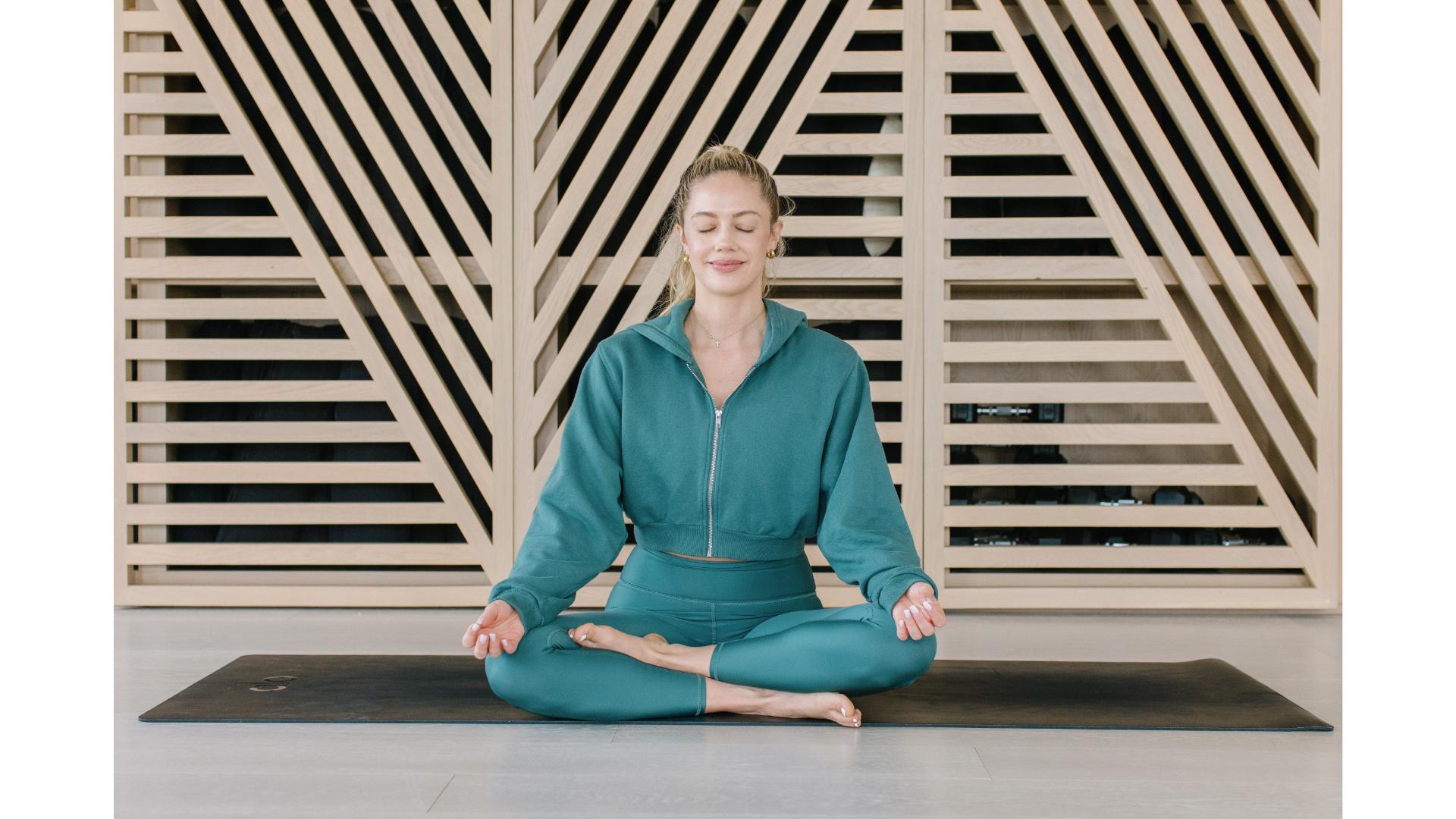
- Sit cross-legged or on your heels with your hands resting on knees or in your lap.
- Inhale for four counts, exhale for six counts through your mouth.
- If you feel comfortable, close your eyes and focus on the sensations in your body.
- To transition to the next move, come onto your hands and knees.
2. Wide legged child’s pose
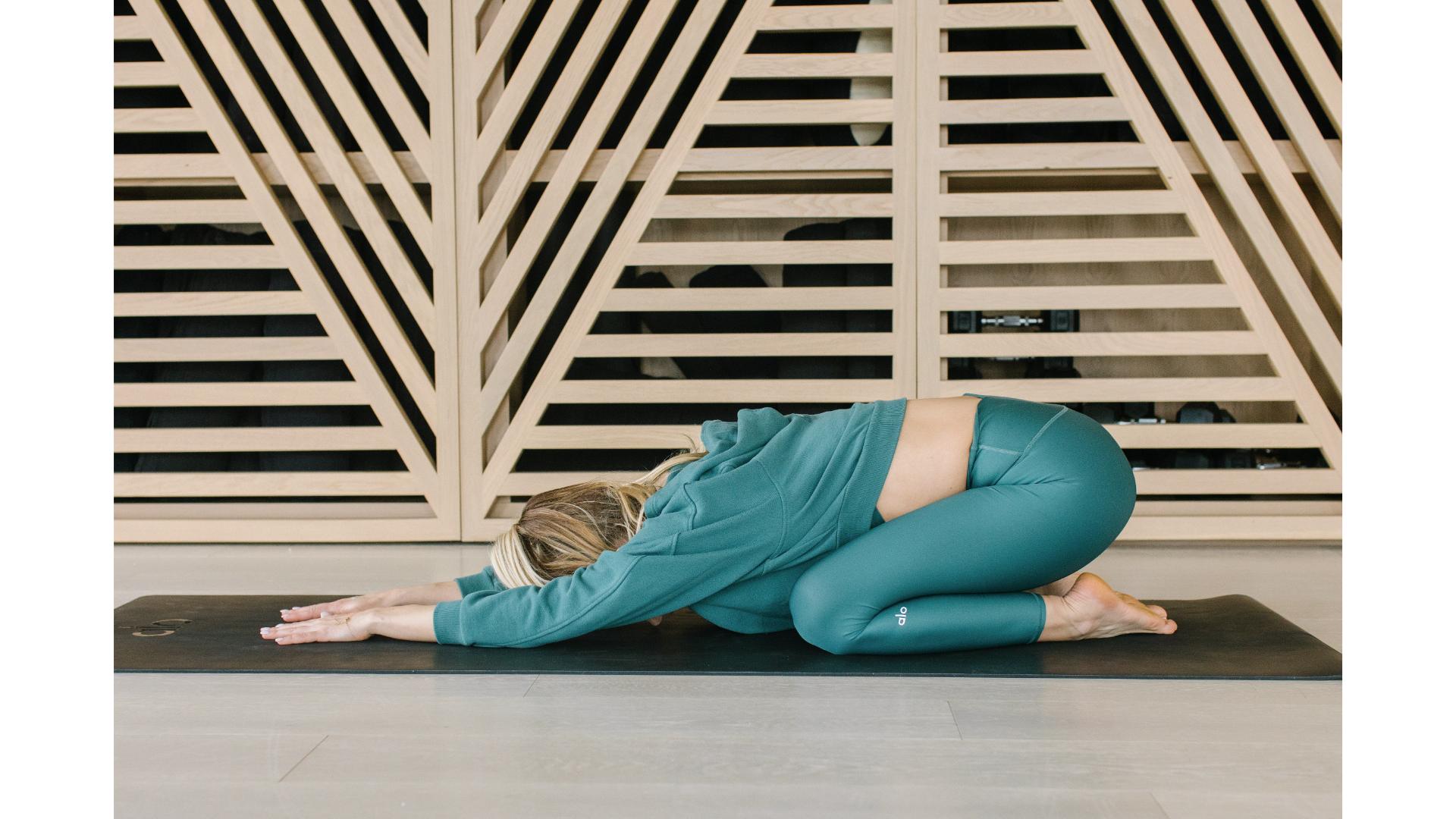
- From your hands and knees, sit back onto your heels.
- Open your knees wide, big toes touching.
- Reach your arms forward and rest your forehead on the mat, breathing deeply.
- If you like, you can sway your hips gently from side to side to release hip tension.
- To transition to the next move, tuck your toes under and lift your hips.
3. Downward-facing dog with hip opener
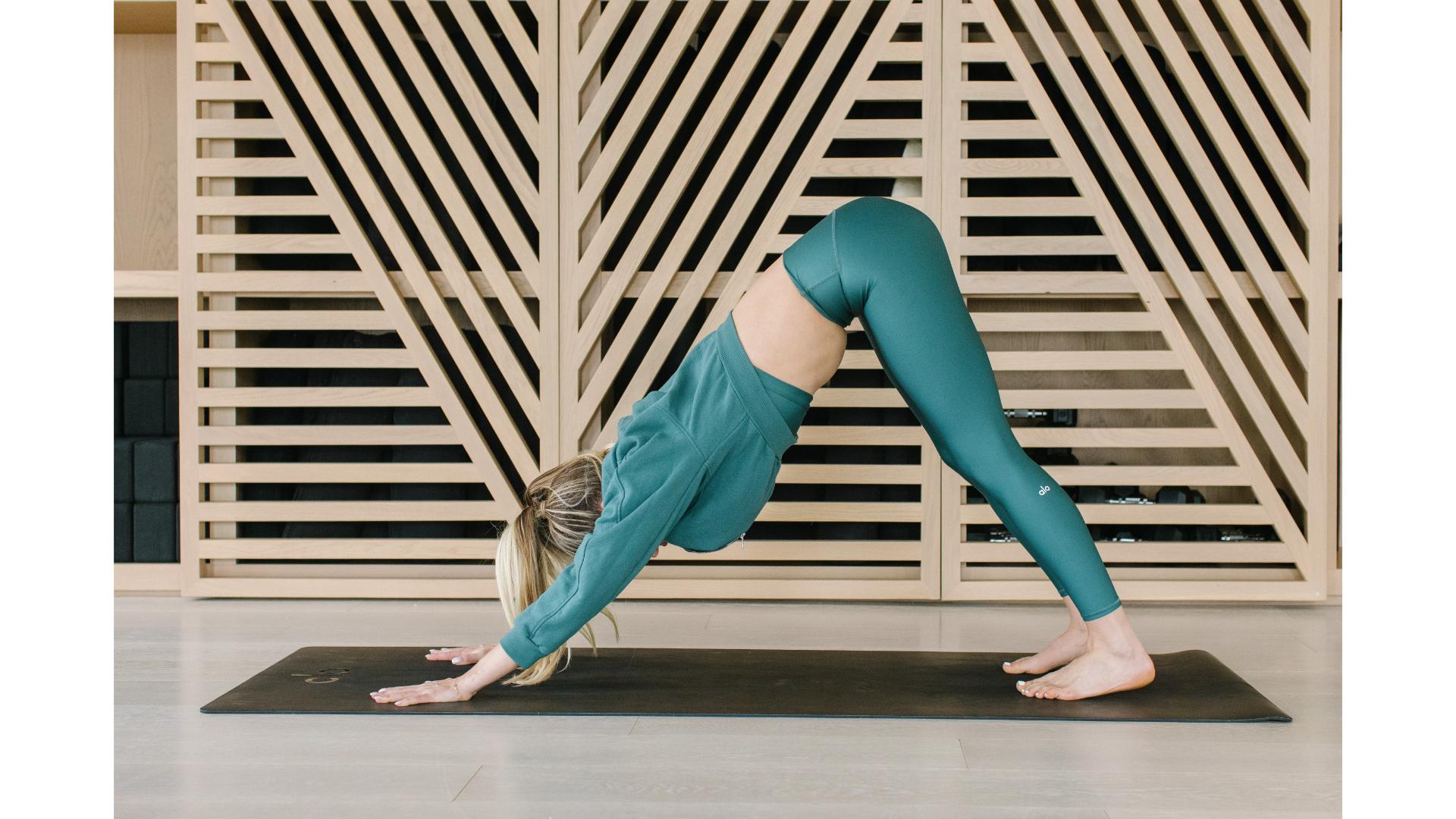
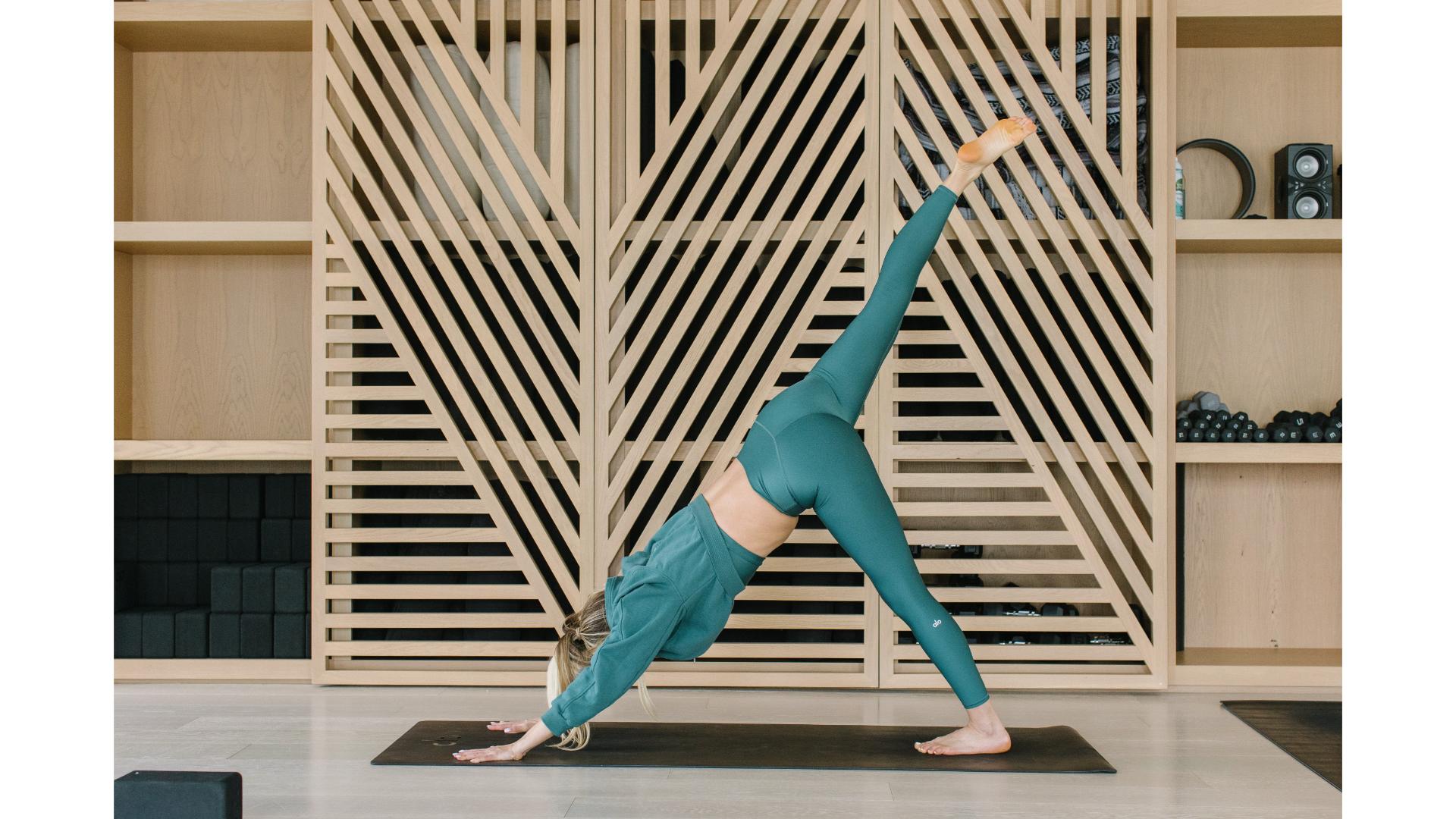
- Inhale and exhale, pressing your palms into the floor and lengthening through your arms and spine.
- Lift one leg up (into three-legged dog pose) and bend that knee to stretch your hip
- Repeat on the other side.
- To transition to the next move, return to downward-facing dog and step one foot forward into a lunge.
4. High runner's lunge
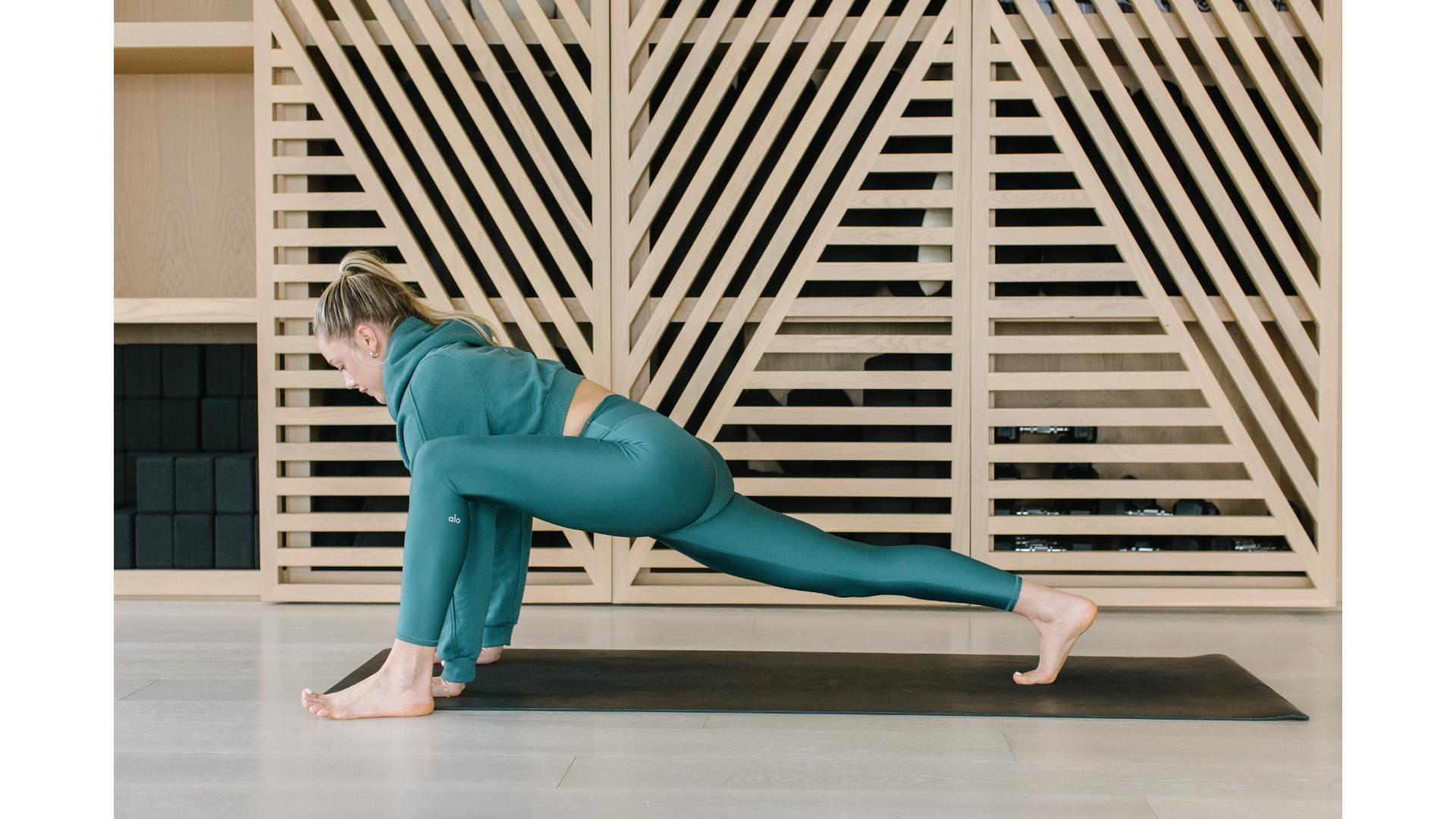
- With one foot forward, extend the other leg back.
- Lean forward and place your hands on either side of your front foot.
- Soften down into hips.
- Switch sides after 30 seconds.
- To transition to the next move, gently lower your back knee to the floor.
5. Grounded crescent lunge with floss
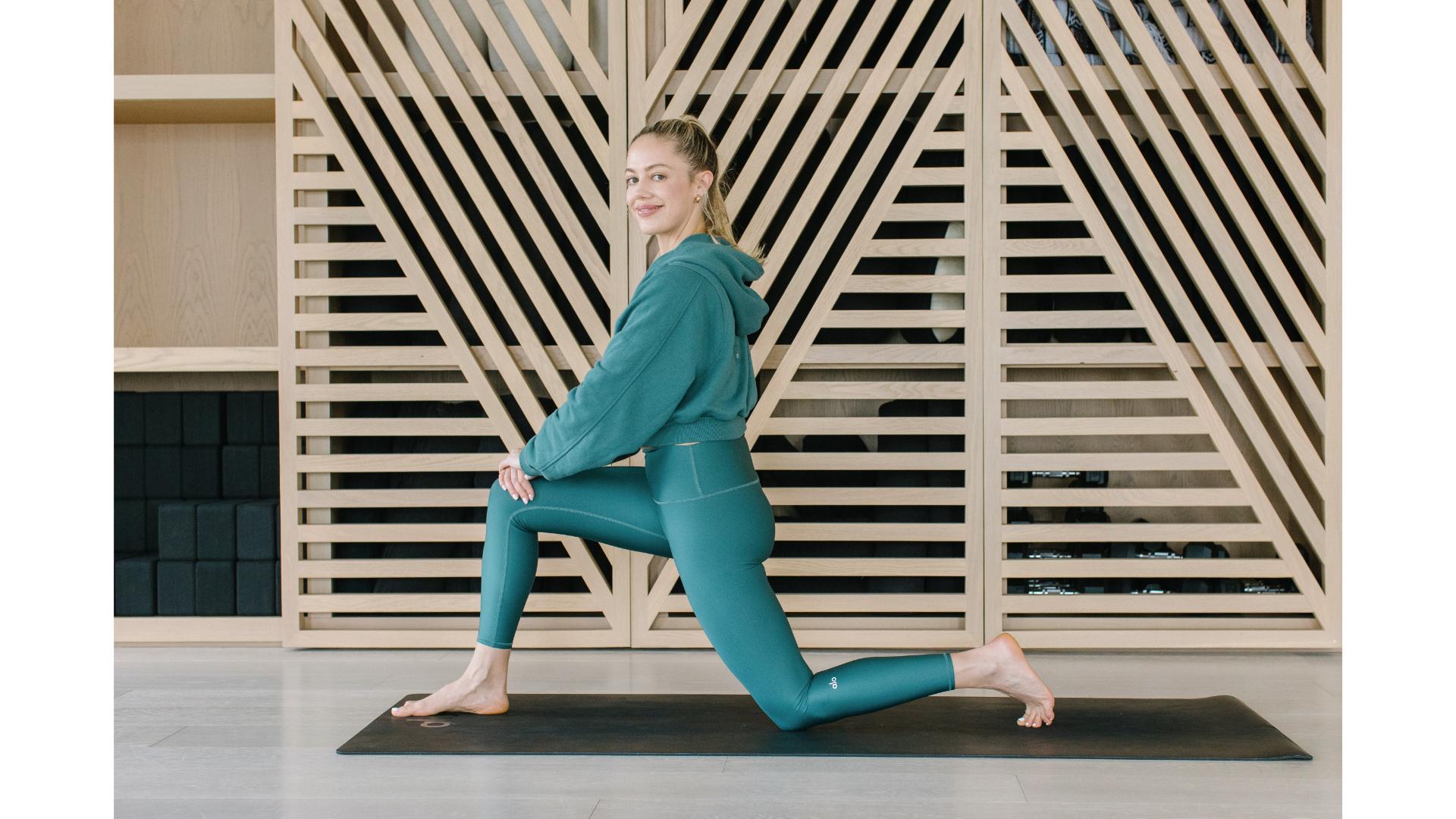
- Inhale and lift your arms and stretch through your torso, keeping it upright.
- Exhale and gently lean your hips forward into a hip flexor stretch. You can floss (move gently) forward and back with your breath.
- Repeat on the other side.
- To transition to the next move, shift your hips back for a hamstring stretch.
6. Half split
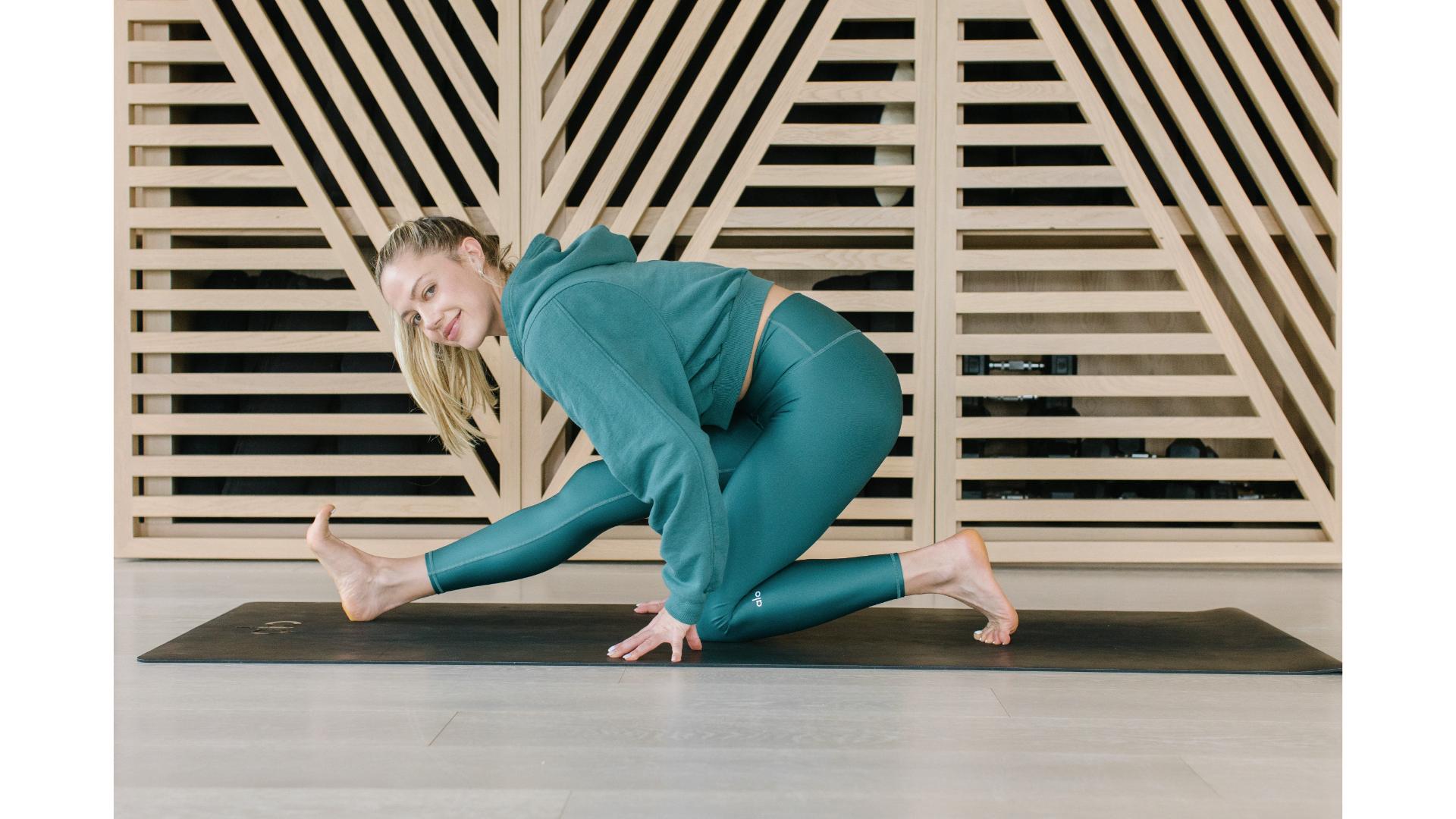
- Extend your front leg with your foot flexed.
- Square your hips and keep your spine long, breathing deeply into the stretch.
- Switch sides after 30 seconds.
- To transition to the next move, slide your front leg back and bring your resting leg forward.
7. Half pigeon
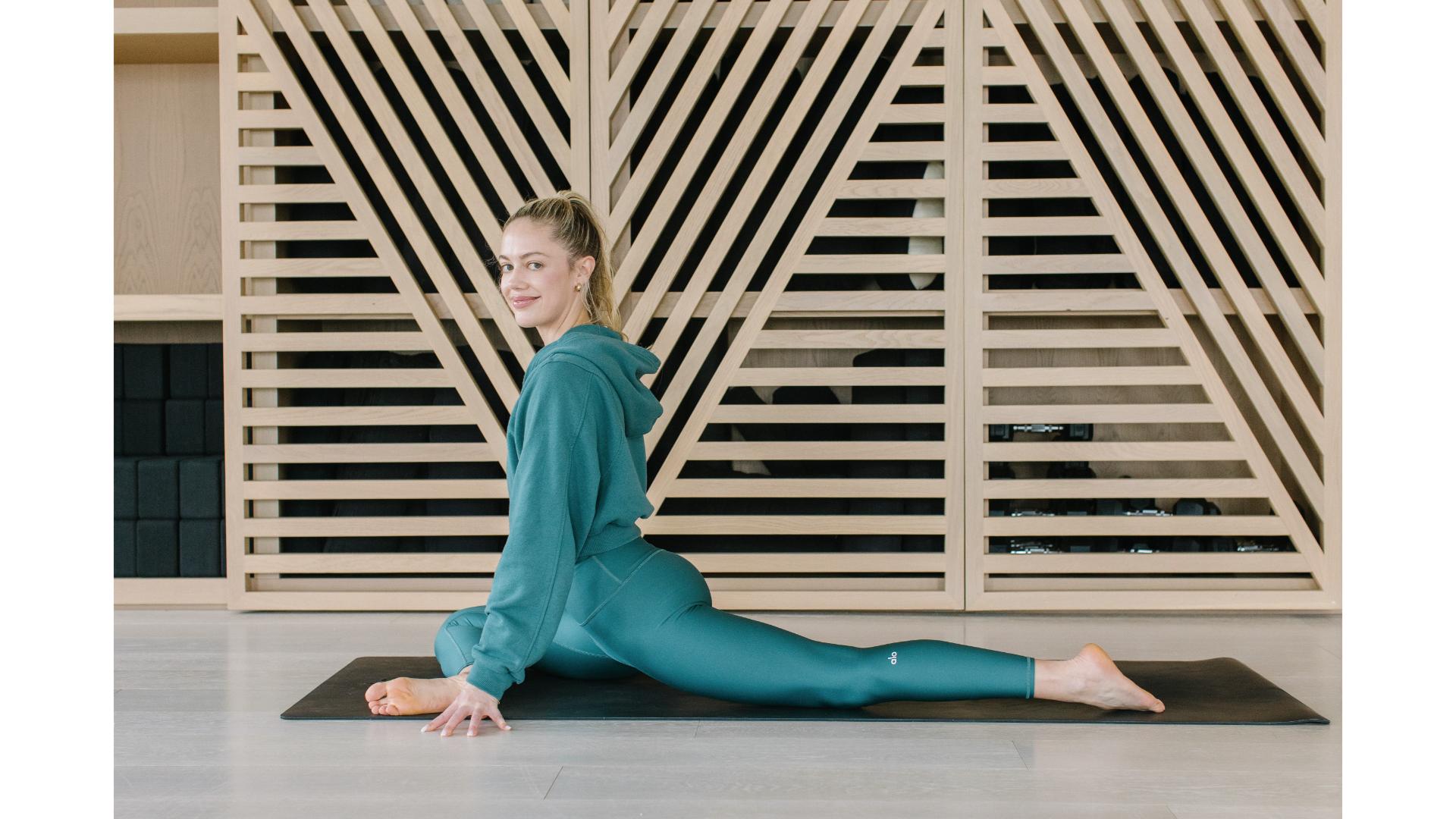
- Bend your front leg in front, cross your lower leg so it's horizontal on the mat, and extend your back leg behind you.
- Fold forward and breathe into the stretch in your glutes and hips.
- Hold for 30 seconds, then repeat on the other side.
- To transition to the next move, bring the rear leg forward and soles of feet together.
8. Supine spinal twist
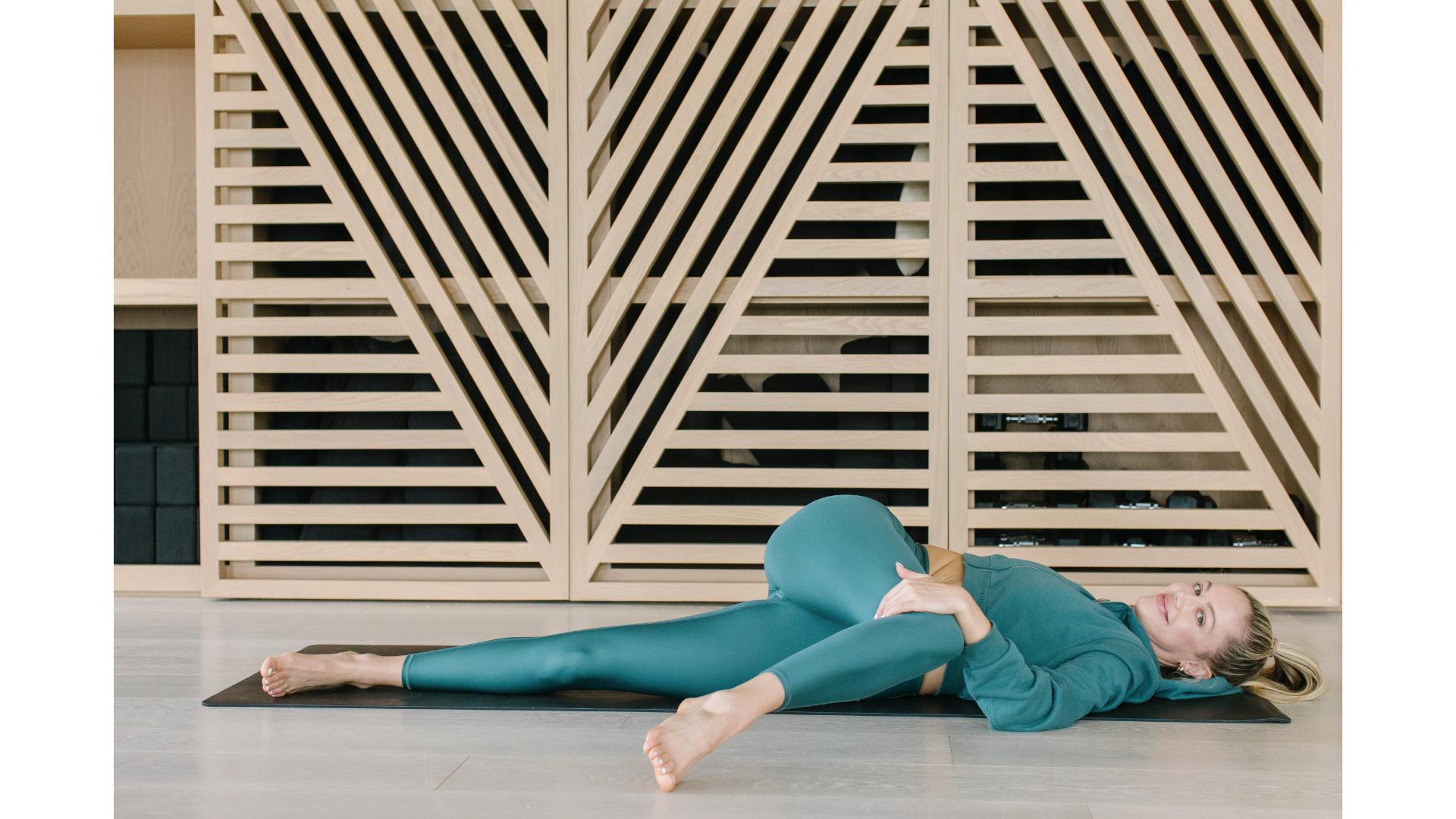
- Lie back, hug your knees to your chest, then drop both knees to one side.
- Extend one leg to the floor, keeping the other bent to the side.
- Open your arms wide across the floor at shoulder height then place the opposite hand on the bent knee if comfortable.
- Switch sides after 30 seconds.
- To transition to the next move, return your legs to centre with knees bent and feet flat on the floor.
9. Reclined figure of four
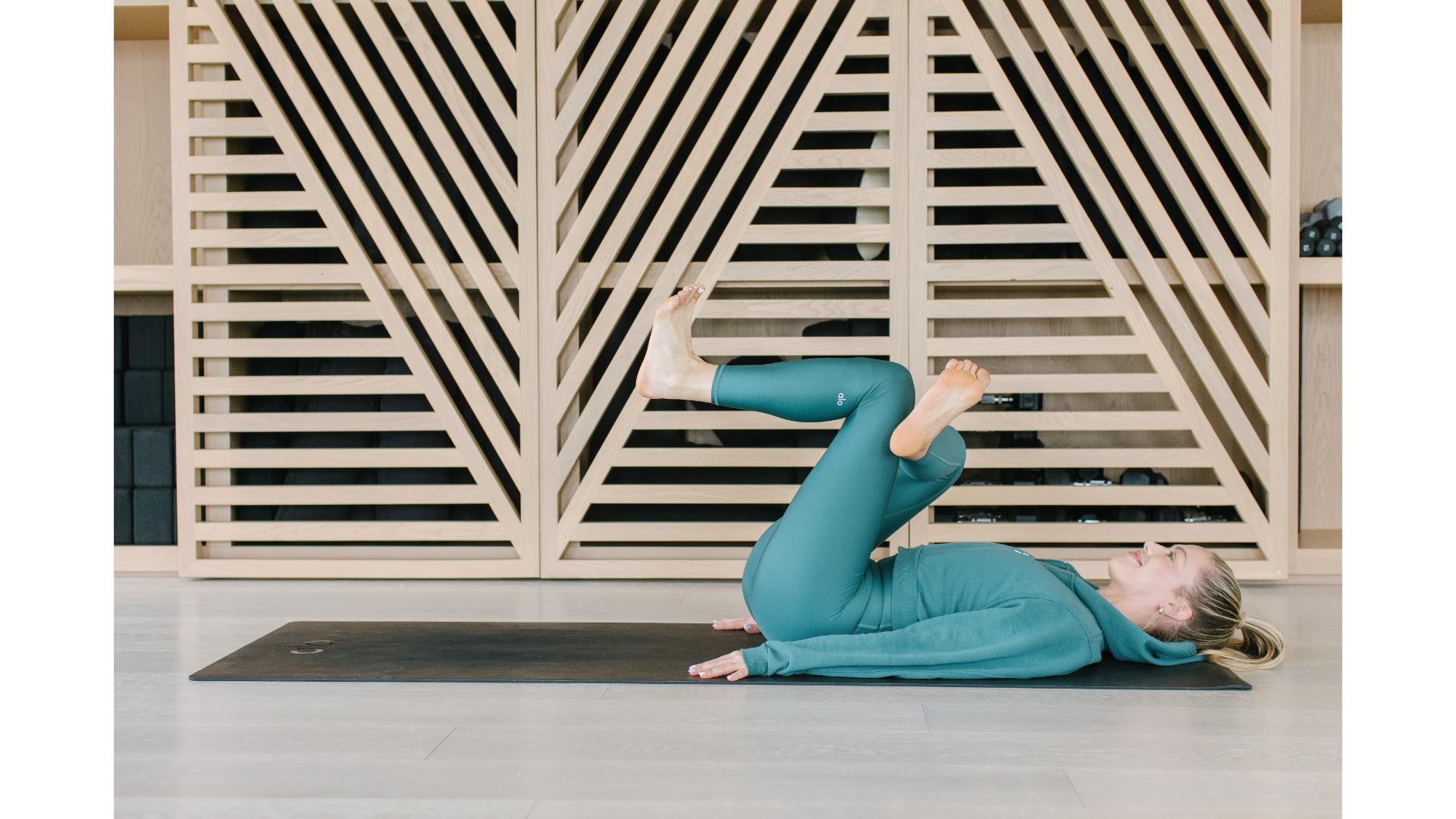
- Place your right ankle on your left thigh, clasp your hands behind your left thigh and draw it in gently.
- Breathe into the stretch.
- Switch sides after 30 seconds.
- Gently roll up to a seated position for the final move.
10. Seated breath awareness
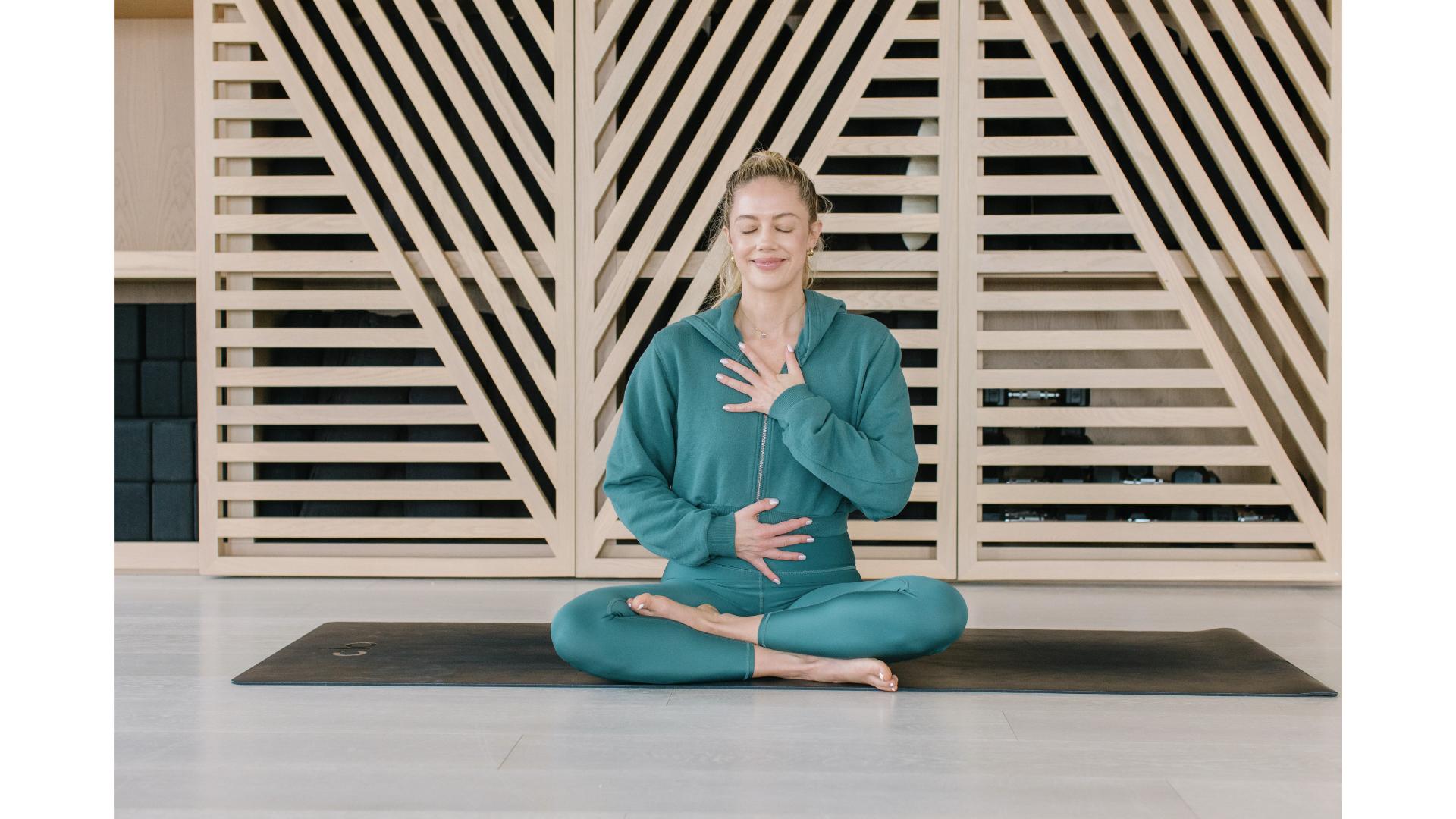
- Sit comfortably with your hands on your chest, abdomen or in your lap.
- Inhale fully, exhale slowly
- Become aware of each breath and the sensations in your body.
Why do our bodies get so stiff?
“Prolonged sitting, intense workouts without recovery and even stress can all contribute to tightness in the muscles,” explains Turpack.
Start your week with achievable workout ideas, health tips and wellbeing advice in your inbox.
“When we sit for hours at a desk, our hip flexors shorten, our shoulders round forward and our spine compresses, all of which can lead to stiffness, poor posture and eventually pain.
“Stretching and mindful mobility allow the body to release that tension and return to its natural range of motion.”
How often should we do full-body, deep stretching to feel the benefits?
“Ideally, full-body, deep stretching should be practiced at least two to three times a week to experience lasting benefits, especially if you're active or sit for long periods,” says Turpack.
“However, even just five to 10 minutes a day of gentle, intentional movement can have a powerful, cumulative effect.
“Mobility and flexibility aren’t fixed traits—they’re skills that we can improve with regular attention.
“Just like brushing your teeth, stretching and movement should become part of your routine for the body and mind.
“Over time, you’ll likely notice better posture, fewer aches, faster recovery and even improved mood and focus,” says Turpack.

Lou Mudge is a Health Writer at Future Plc, working across Fit&Well and Coach. She previously worked for Live Science, and regularly writes for Space.com and Pet's Radar. Based in Bath, UK, she has a passion for food, nutrition and health and is eager to demystify diet culture in order to make health and fitness accessible to everybody.
Multiple diagnoses in her early twenties sparked an interest in the gut-brain axis and the impact that diet and exercise can have on both physical and mental health. She was put on the FODMAP elimination diet during this time and learned to adapt recipes to fit these parameters, while retaining core flavors and textures, and now enjoys cooking for gut health.
